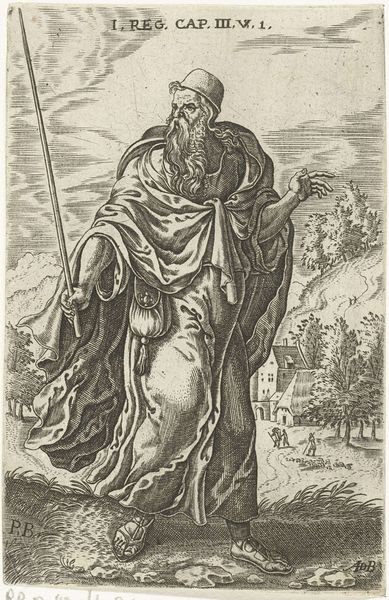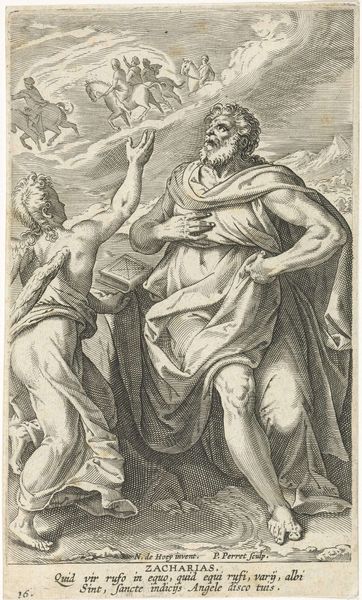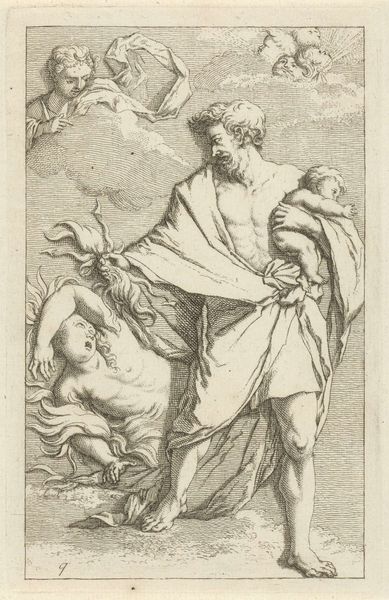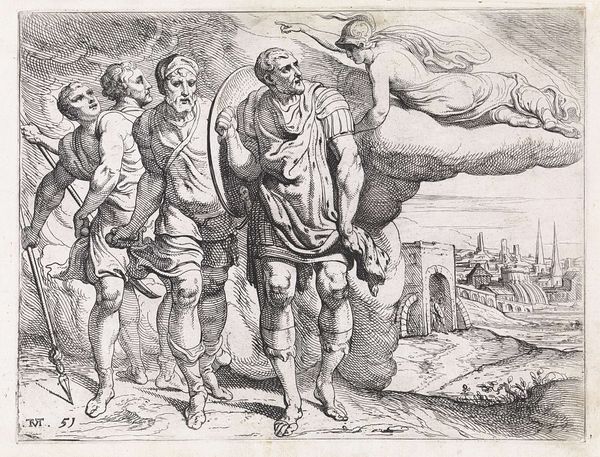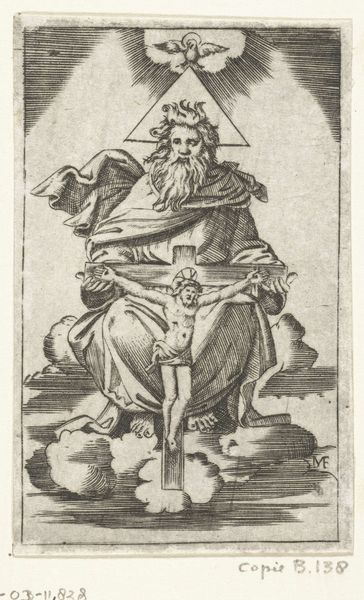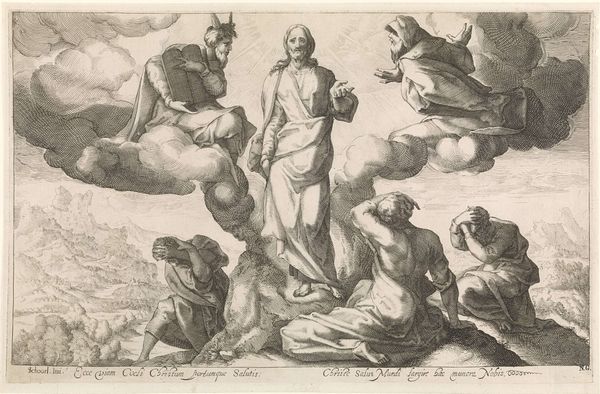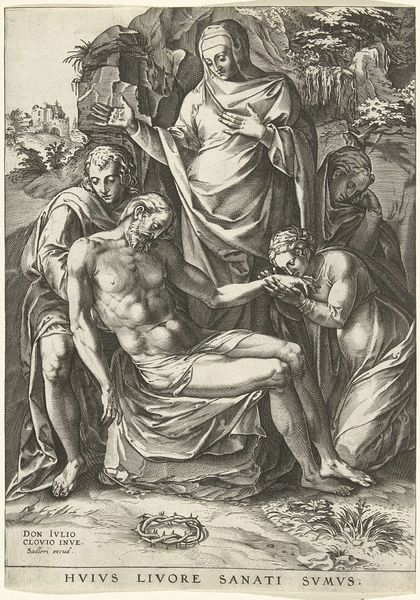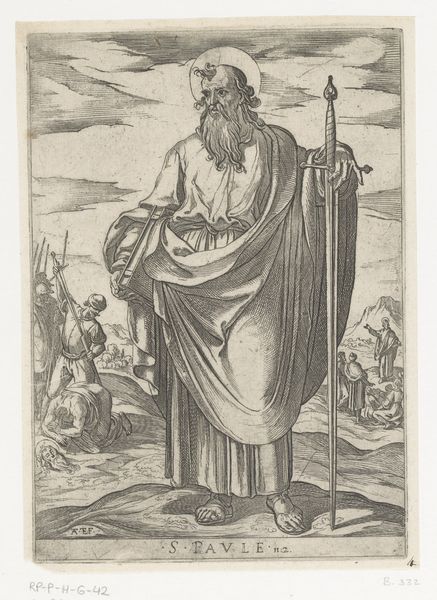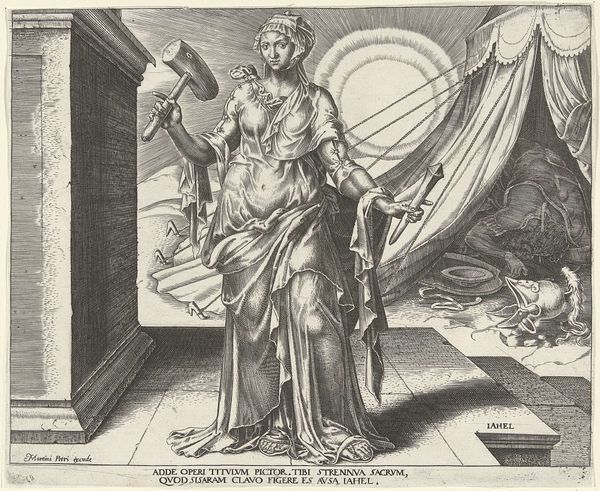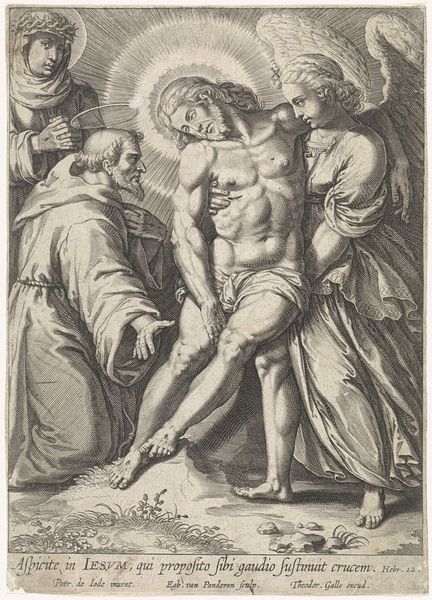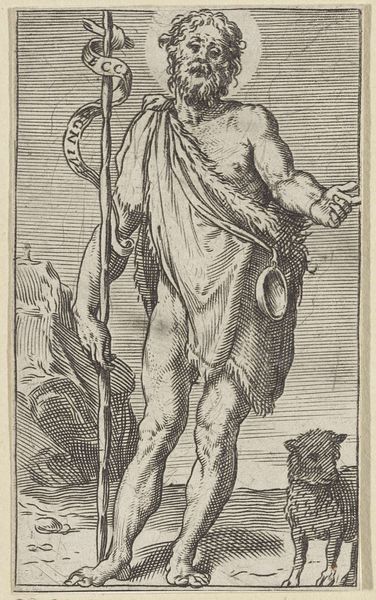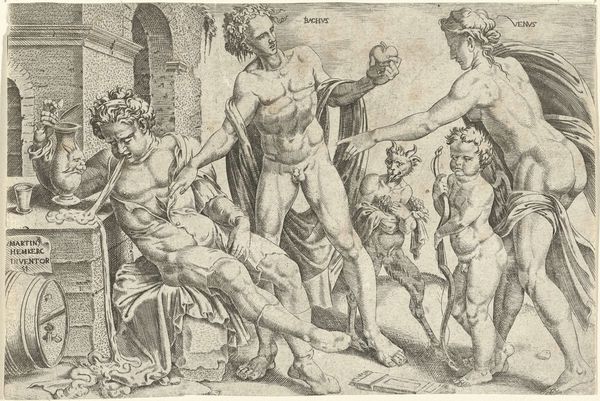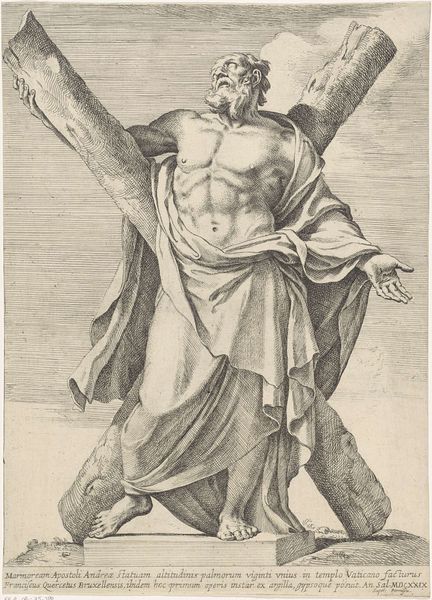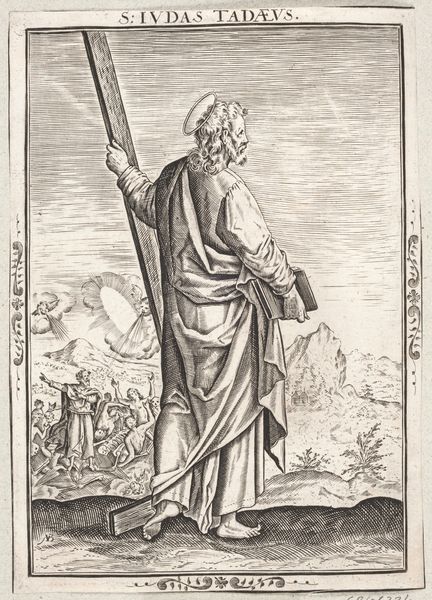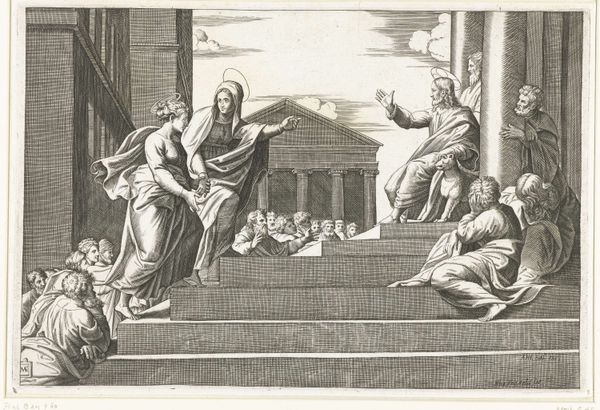
print, engraving
# print
#
pen sketch
#
pencil sketch
#
figuration
#
history-painting
#
italian-renaissance
#
engraving
Dimensions: height 107 mm, width 192 mm
Copyright: Rijks Museum: Open Domain
Curator: The composition seems unusually formal, almost like a triptych condensed into a single panel. I find the stoicism heavy, as though carrying centuries of expectation. Editor: Exactly! Let’s consider the artist here. This engraving is by Agostino Carracci, dating from 1583, and currently held at the Rijksmuseum. It is entitled "Johannes de Doper, Christus en Maria"– John the Baptist, Christ and Mary. As we consider the historical and sociopolitical context, we realize it emerged from a highly structured, patriarchal world where figures like these held immense power. Curator: Yes, but notice how Carracci uses established iconographic codes for each figure, enriching them through his detailed style. Saint John, with his animal skins and staff topped with a cruciform banner reading “Ecce Agnus Dei"—Behold the Lamb of God. It powerfully roots this work within visual tradition. Then Christ Pantocrator with his orbis holding a miniature cross above a globe, then Mary herself in modest raiment—each carefully articulated. Editor: I read those symbols quite differently. The formality, while standard for depictions of these biblical characters, creates a distinct hierarchy. How might viewers interpret this in relation to 16th-century Italian society, especially concerning power and gender? Curator: The symmetry surely enhances this sense of timeless authority, with Christ as this focal point flanked by Mary, an intercessor, and John who announced Christ's messianic mission—as they embody core aspects of the divine plan within the Christian faith. Editor: A patriarchal divine plan indeed! The linear quality of the engraving emphasizes the sharp edges of societal roles and moral prescriptions that shaped experience and continue to impact the experience of the faithful and not so faithful in our current society. This work makes me wonder: How do religious institutions use images to maintain power structures and construct specific narratives about who we should be? Curator: By activating enduring symbolic forms within carefully conceived relationships of power and gender, it speaks across generations about divine truth through beauty. Editor: Leaving us with difficult, vital questions about our relationship to tradition, the Church, power, and enduring impact in our own time.
Comments
No comments
Be the first to comment and join the conversation on the ultimate creative platform.
